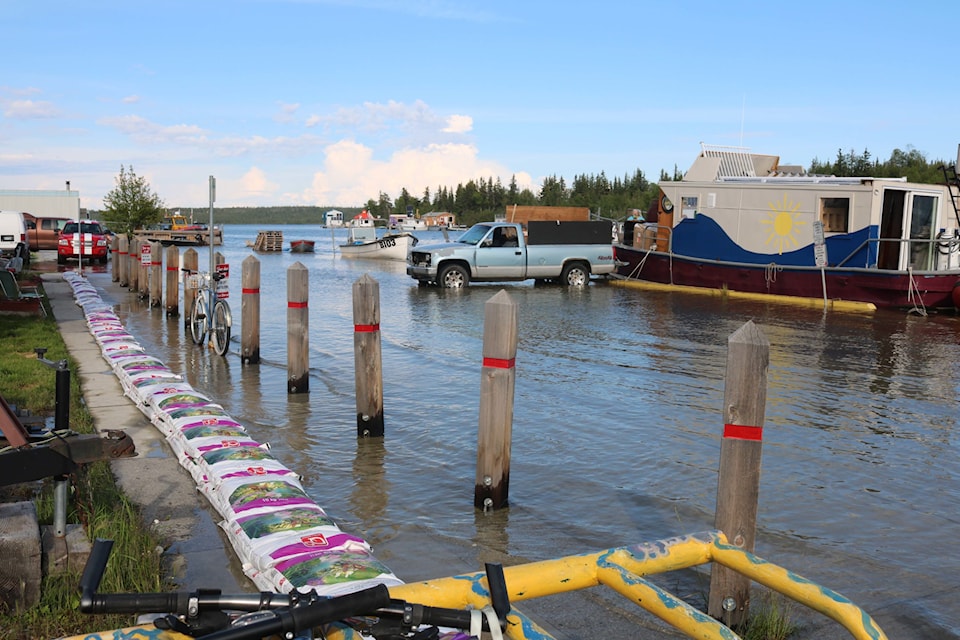Record-high water levels on Great Slave Lake and NWT rivers during the summer of 2020 are expected to persist this summer.
“We anticipate Great Slave Lake water levels will not return to normal for a while,” said Environment Minister Shane Thompson in the legislative assembly March 29. “Current conditions are unprecedented and what happens over the next few months will depend on several things, like the timing and volume of precipitation, the time and the rate of snow and ice melt in the spring and the thickness of river and lake ice.”
2020 highest level in 48 years
The level of Great Slave Lake last summer was about 25 centimetres higher than the average of the previous 48 years, said Shawne Kokelj, a hydrologist with the GNWT’s Department of Environment and Natural Resources (ENR).
Assessments of the lake's water levels use 1972 as a start date for records because the hydroelectric regulation of the Peace River in that year changed the flow into the Slave River and Great Slave Lake. The lake's level has averaged between 156 and 157 m above sea level for most of the data period going back to 1941.
High snowpack volumes in southern Yukon and NWT, and in the northern areas of British Columbia, Alberta and Saskatchewan, caused the water level increases, as well as higher amounts of rain and rapid spring melt.
Exciting paddling but beware
For Dan Wong, owner of canoe adventure company Jackpine Paddle, the higher levels on NWT water bodies present a “mixed bag” of conditions.
“Last summer was a positive year to go paddling because it made for some really action-packed trips and training. Higher volumes … generally means bigger white water,” he said.
At the same time, higher flows can demand more skill and caution from paddlers.
“The Coppermine River last summer was a white-knuckle ride. For paddlers paddling remote rivers that are high volume, they need to take into account that it could change a river from intermediate to advanced. For people going on their own trips, they should take into account that the water might be very high. Make sure you plan for that,” Wong advised.
He also noted that lower water levels can also be problematic. He recalled 2015 and 2016 when the Kakisa, Yellowknife and Cameron rivers were “super low,” affecting navigability and access to cabins.
Flows already high in mid-March
In a news release on March 16, ENR said that based on current data, flow rates on the Slave, Tazin and Taltson rivers and the water level of Great Slave Lake are “very high for this time of year.”
As a result, there is potential of floods from rivers and streams in the NWT this spring and the GNWT is cautioning people who have property near bodies of water to prepare for the risk of floods.
Residents can take such steps as moving valuables and equipment to safe places; and removing or elevating electrical components, carpets, furniture and mattresses.
A team of hydrology experts from the GNWT and government of Alberta, BC Hydro, Environment and Climate Change Canada and the Global Water Futures program from the University of Saskatchewan came together in September 2020 to better understand the higher water levels of last summer and fall, ENR said in a separate release on March 2.
Heavy rainfall in 2001-2020
That group's analysis report found that heavy rainfall in the basins that feed Great Slave Lake was the highest on record over the 2001 to 2020 period.
High levels in the Peace-Athabasca Delta and Lake Athabasca led to higher flows in the Peace and Athabasca rivers, which feed into the Slave River and from there into Great Slave Lake.
“It is unusual for all of these inputs to be extremely high at the same time,” the department said.
The group's analysis also examined the operation of the Williston Reservoir and the W.A.C. Bennett Dam on the Peace River in B.C, which might have reduced higher flows on the Peace and Slave rivers last summer.
